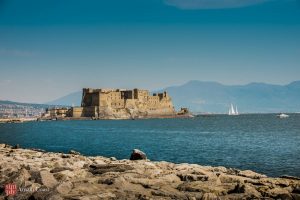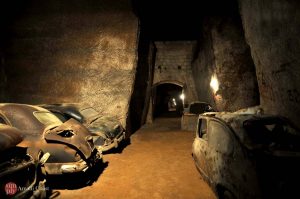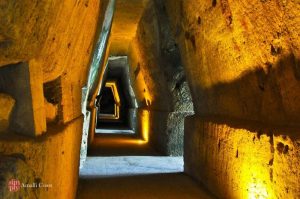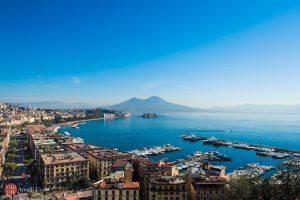HISTORY
It is said of the siren Partenope, who was so angry she couldn’t enchant Ulysses, committed suicide by letting herself be drifted away by the waves until she was found among the rocks along these coasts.
What is certain is that the first settlements date back to the sixth century, the period in which the town of “Partenope” was founded.
In 470 BC the Cumaeans established the first true urban center of Napoli, in the area currently occupied by the historical center. This new agglomeration was given the name of Neapolis, or “new-town”, an important colony of Ancient Greece full of temples, theaters, racetracks and imposing religious structures.
Very little remains of ancient Partenope, and even the name was changed to Palepolis, or “old-city.”
NOT TO BE MISSED
Spending a day in the city of Naples is simply not enough to discover even the smallest part of its great wealth.
Certainly worth a visit is the historic center, which encompasses many small gems like the Veiled Christ in the Chapel of Sansevero, the Treasure of San Gennaro and other testimonies found in the old town.
Equally evocative is a visit to Naples Underground; it was originally created as a tuff quarry, which later became an aqueduct, and finally used as a shelter during the Second World War. Even today one can learn about each of these uses, and especially its real small city feel, where the Neapolitans were able to perfectly recreate their everyday life during the war.
Another site of great interest is no doubt the imposing Castel dell’Ovo.
The castle stands on the islet of Megaride, now connected to the mainland, and owes its name to a legend that the poet Virgilio had hidden an egg in the lower part of the fortress and the survival of the building and Naples itself depended
on this egg.
And finally, we cannot avoid going to Cuma to visit the Antro della Sibilla.
The long trapezoid-gallery, is considered the place where Sibyl Cumana received the faithful and divulged the prophecies of the god Apollo.
CELEBRITIES AND TRADITIONS
Christianity and legend are intertwined in this location full of surprises, creating its history and traditions: well known, for example, are the figures of the “munaciello” (spirit) and the
“Bella Mbriana”.
The first, seen as a kind of little demon who bought poor people’s souls, seems to be really just a women’s lover boy, who met with them while their husbands were absent and paid them upon leaving.
And if the young hooded man represented evil, on the other hand there was the beautiful bella Mbriana, a kind of anti munaciello, represented by a beautiful woman.
Families always leave a place at the table and a hot dish for the good spirit of the house, comparable to a sort of good fairy, in exchange for her protection.
The pizza Margherita was created in Naples and was tasted for the very first time by the queen of the same name; created here too is the sought-after mozzarella, the sweet puffs and the babà sweets and of course pasta, whose image is supported by the famous Pulcinella mask.
Naples has given birth to internationally renowned artists, singers such as Enrico Caruso, Renato Carosone and Pino Daniele; and comedians such as Totò, Eduardo de Filippo, Peppino and Titina, Salemme and Izzo.
The city of Naples is perhaps one of the few places in the world to have given birth to ideas that have changed the world: can you imagine a Saturday night with friends without a pizza? Or a Christmas without a charming manger? This characteristic representation of the nativity originates from this very city! And what would comedy be like without the Neapolitan’s faces and the history of music?
 Simply Amalfi Coast
Simply Amalfi Coast 


